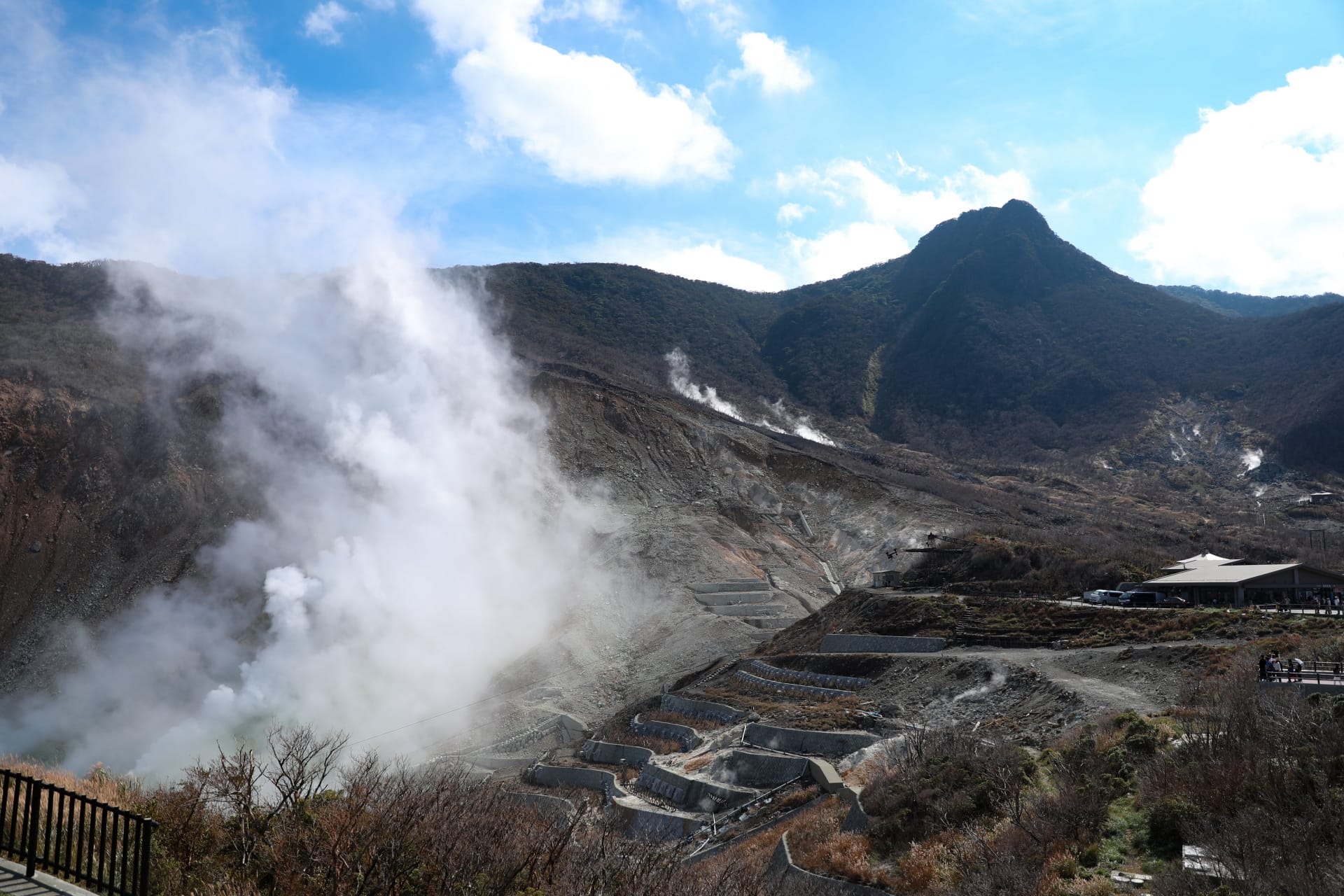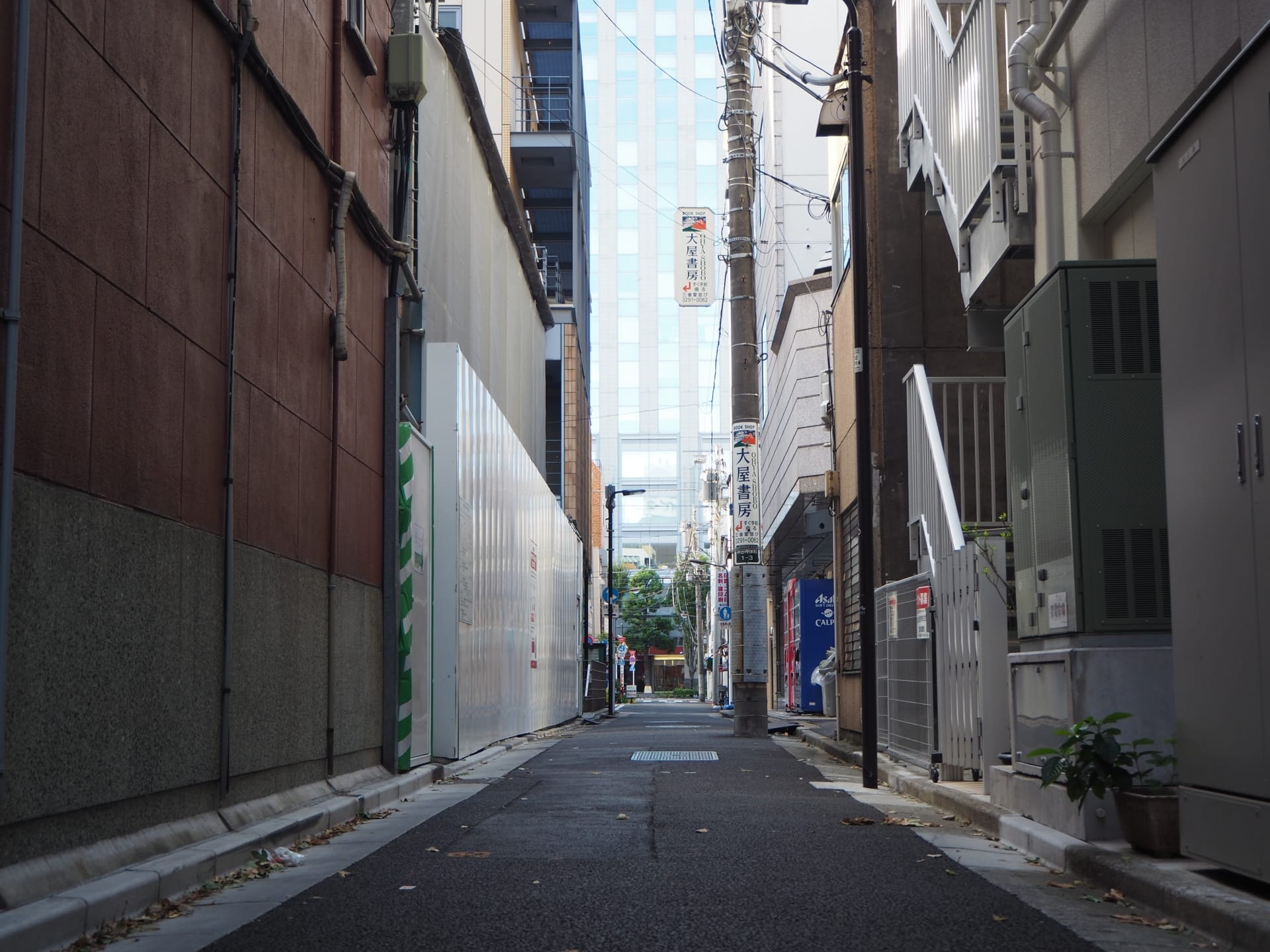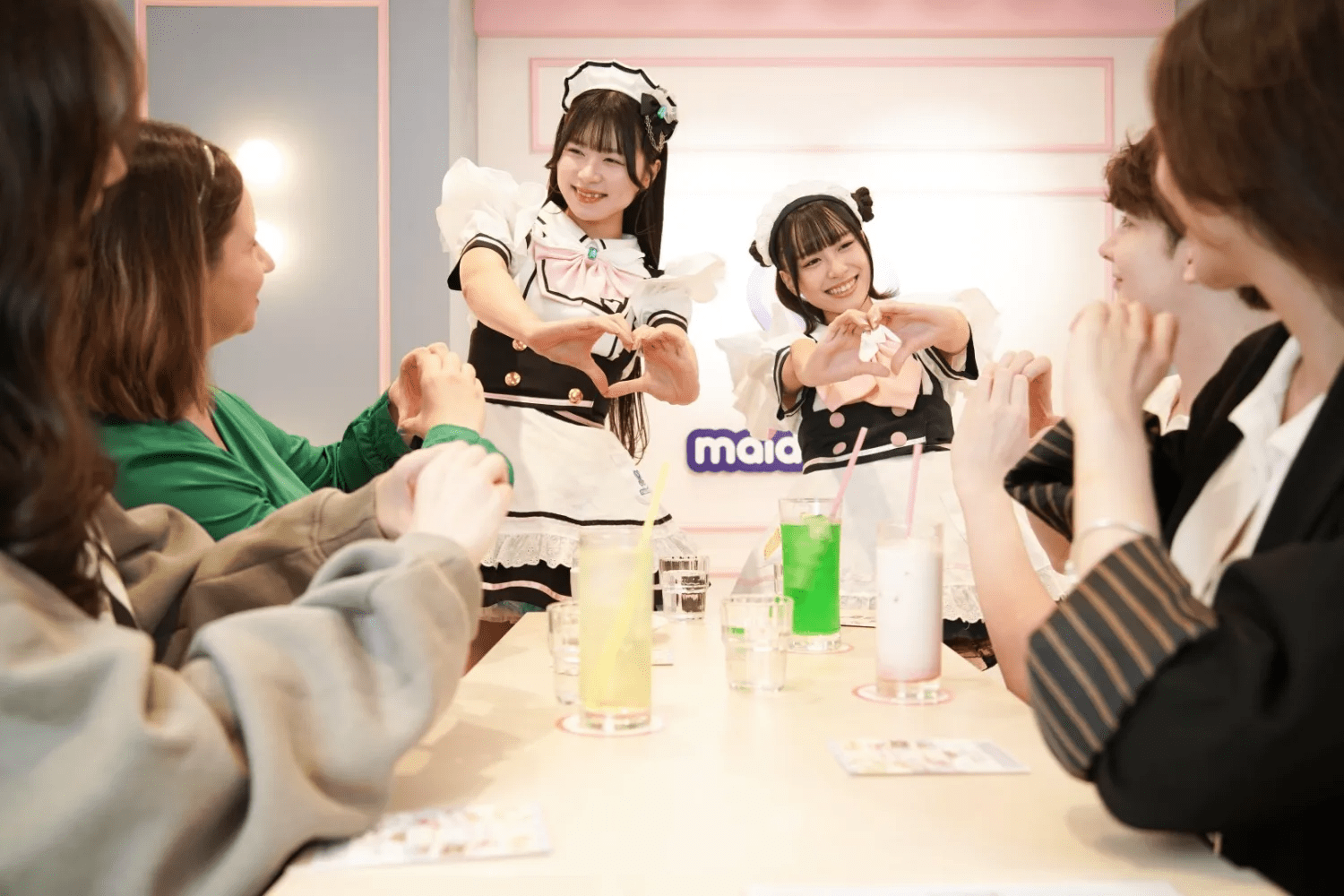Hakone Owakudani Guide: Explore the Stunning Volcanic Valley
Hakone Owakudani is a powerful volcanic experience spot that can be visited in about 90 minutes from Tokyo.
I've been visiting for over 10 years, and even now, my heart races when I see the smoke rising from the ground amidst the scent of sulfur. What I particularly love is the mystical scenery when visiting in the morning. The early morning hours, when tourists are sparse, offer a special time to have the view of Owakudani emerging through the steam all to myself.
Indeed, during peak tourist seasons on weekends, you might have to queue for the ropeway, but the breathtaking views and experiences that await are worth it. I visit with friends every year, and Owakudani, which changes its expression depending on the season and weather, always offers new discoveries.
Let me introduce you to the reasons why I'm drawn to visit this place, formed by a volcanic eruption 3000 years ago, time and time again.
Throughout Japan, including Hakone, Magical Trip offers guided tours where you can explore local history, traditions, and food culture in depth with local guides.(Hakone Full Day Chartered Private Tour: Art & Nature)
Our most popular tour "Tokyo Bar Hopping Night Tour in Shinjuku" was ranked as Tripadvisor's #1 tour in 2024.

For tourists visiting Tokyo, why not try a private car tour that lets you efficiently visit multiple attractions in a single day? With expert guides who know all the best spots, you can fully experience the region's traditions and rich food culture even in just one day.
These tours include hotel pickup and drop-off service, allowing you to visit attractions stress-free and efficiently. If you're interested in nature-rich destinations like Hakone and want to explore Japan's history and traditions while avoiding crowds, these tours are perfect for you.
・Hakone Full Day Chartered Private Tour: Art & Nature
・Mt. Fuji Full-day Nature Guided Tour with a Private Chartered Car & Guide
Table of Contents
・What is Hakone Owakudani?
・Main Attractions in Owakudani
・How to Access Owakudani from Tokyo
・Spots to Visit Along with Owakudani in Hakone
・Frequently Asked Questions about Owakudani
What is Hakone Owakudani?
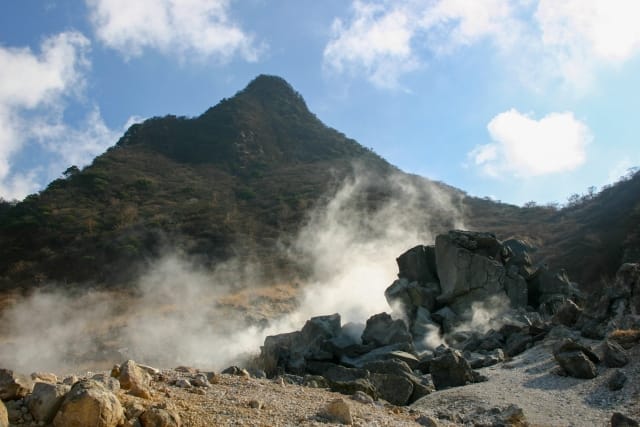
Hakone Owakudani is one of Japan's premier volcanic areas that I've been visiting for over 10 years. I still vividly remember the shock of my first visit. The white smoke rising from the ground, the scent of sulfur in the air, the heat of the earth felt through my feet... It was like directly feeling the pulse of the Earth.
Formed by a volcanic eruption about 3000 years ago, this place continues to have active geothermal activity even now. I visit throughout the four seasons, but especially on cold winter mornings, the white smoke mixing with the cold air creates a fantastical landscape that seems like another world. I have many memories of forgetting the cold and continuing to take photos.
And the charm of Owakudani isn't just the volcanic activity. My favorite is the spectacular view of Mount Fuji and the Hakone mountain range from here. Even after 10 years of visits, this view still captivates my heart. It has become one of my favorite photo spots.
Main Attractions in Owakudani
Owakudani has many attractive spots, but I'll introduce the ones that have been particularly popular with my foreign friends over my 10 years of visits. From the impressive scenery of the fumarole area to unique local delicacies, there are various ways to enjoy this place.
Black Eggs
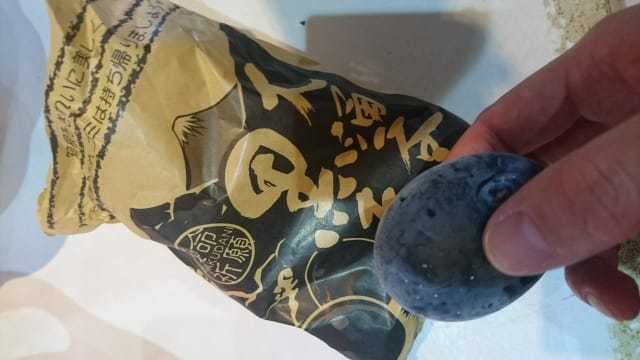
The iconic specialty of Owakudani is the "Black Eggs." I always purchase them every time I visit, and their unique appearance and taste are always a special experience. These black eggs are boiled using Owakudani's geothermal heat, and their shells turn black due to a reaction with sulfur compounds.
According to a local interesting legend, eating one egg is said to extend your lifespan by 7 years. Regardless of the truth, this legend is very popular among foreign tourists, and all the friends I've guided have bought them with sparkling eyes after hearing this story.
The price is also reasonable at 500 yen for 4 eggs, and my recommended way to eat them is to taste them on the spot while they're still warm. The savory aroma when you crack the shell and the rich taste when you put it in your mouth will surely become a unique memory of Owakudani.
Hakone Ropeway
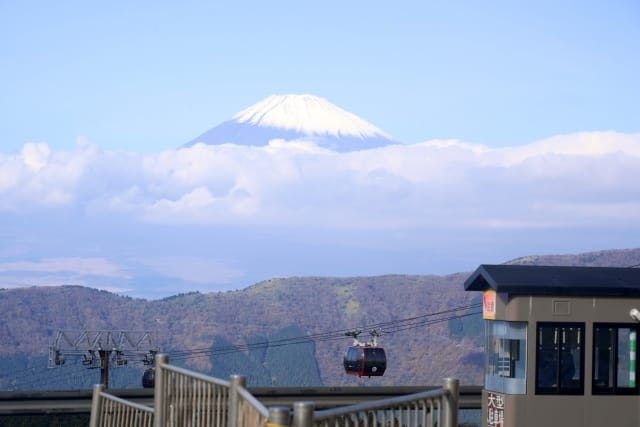
The Hakone Ropeway is an aerial walk of about 4km connecting Sounzan Station to Togendai Station. What I particularly like is that you can view the fumarole area of Owakudani from directly above. On clear days, you can also see Mount Fuji, and this spectacular view is moving every time I see it.
I've guided numerous foreign tourists here, and everyone seems to feel the overwhelming power of the view of Owakudani from the gondola. Especially, the moment when you can see the white smoke rising up close is breathtaking, and many people eagerly take photos with their cameras and smartphones.
The scenery changing with the seasons is also attractive. You can enjoy fresh greenery in spring, autumn colors in fall, and sometimes snowy landscapes in winter. Also, the ropeway is convenient for accessing surrounding areas and is a valuable means of efficient transportation for sightseeing.
Hakone Geomuseum
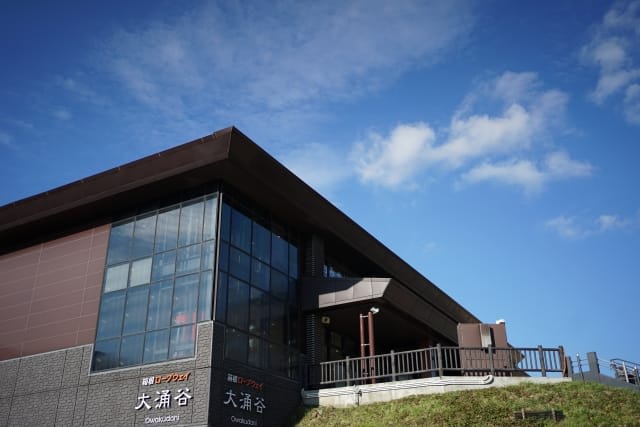
When I guide my foreign artist friends, one place I always stop by is this Hakone Geomuseum. Located on the first floor of the Owakudani Kurotamago-kan, it's a museum where you can learn deeply about Hakone's geology and volcanic activity, and it's particularly popular with science-loving tourists.
The exhibits using videos and precise models are designed to visually understand the mechanisms of volcanoes.
The admission fee is only 100 yen, making it easily accessible for families. In the same building, you can also see exhibits about the famous black eggs and there's a well-stocked souvenir corner.
There's also an activity called the "Nature Research Path" where you can observe Owakudani's volcanic activity with staff guidance, but this is by reservation only, so please make an online reservation early.
Website: https://www.hakone-geomuseum.jp/english/
Nature Research Path reservation: https://www.hakone.or.jp/od-booking/
Observation Deck and Mount Fuji View
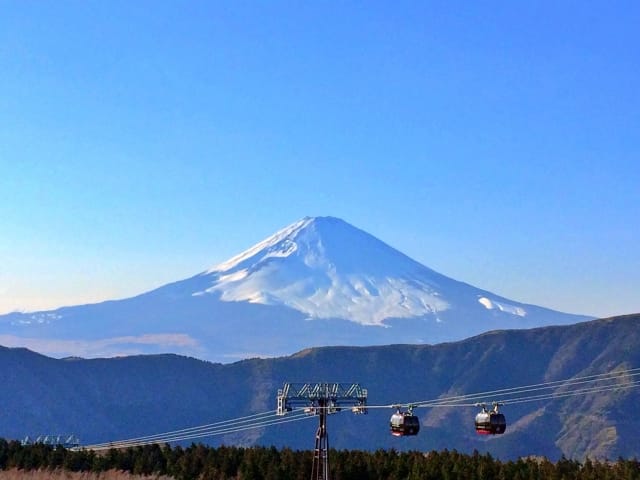
The view from the observation deck is one of the reasons I've been visiting for 10 years. Particularly impressive is the scenery of rising smoke with Mount Fuji in the background, where many tourists involuntarily stop to enjoy taking photos.
The scenery changing with the seasons is also attractive. In spring, you can enjoy the contrast of fresh greenery and the remaining snow on Mount Fuji; in summer, the powerful smoke and blue sky; in autumn, the combination of autumn colors and Mount Fuji; and in winter, the fantastical scenery of a pure white snow landscape and smoke. My recommendation is the scenery seen in the clear air of early morning. The gradual appearance of Mount Fuji from the mist-shrouded Owakudani is exceptionally beautiful.
Also, the scenery created by the hot spring steam is not to be missed. Especially on chilly mornings and evenings or in winter, the rising steam creates a fantastical atmosphere, giving you a feeling of being in another world.
How to Access Owakudani from Tokyo
There are multiple transportation options from Tokyo to Owakudani, but based on my 10 years of experience, I recommend a route combining train and bus. While visiting by car is also attractive, I recommend using public transportation for first-time visitors. I'll explain each route in detail below.
How to Go by Train and Bus
The journey from Shinjuku Station to Owakudani is a route I've guided foreign friends on many times. Using the Romance Car or express train, you can reach Hakone-Yumoto Station from Shinjuku Station in about 85 minutes. The scenery from the train window is also enjoyable, and on clear days, you might even see Mount Fuji, allowing you to feel the charm of Hakone from the start of your journey.
From Hakone-Yumoto Station, you transfer to the Hakone Tozan Railway, which has a charming retro atmosphere. The way it climbs steep gradients is particularly popular with foreign tourists. The line to Sounzan Station is unique, repeating switchbacks as it climbs, and this scenery and experience will surely become a good memory of your trip.
From Sounzan Station, you transfer to the Hakone Ropeway to Owakudani Station. Each transfer is smooth, and with ample guidance signs, even first-time visitors won't get lost.
My recommendation is to use the Hakone Free Pass. With this pass, you can enjoy unlimited rides on the ropeway, mountain railway, buses, and more, making it very economical for sightseeing.
Website: https://www.hakonenavi.jp/international/en/discount_passes/free_pass
How to Go by Car
To access Owakudani by car, use the Tomei Expressway, exit at Gotemba IC, and then take the Hakone Skyline. I sometimes use this route too, and especially when departing early in the morning, you can enjoy a comfortable drive with less traffic.
The parking lot at Owakudani is spacious and well-maintained, with an easy-to-park design. However, it tends to get crowded during tourist seasons and weekends, so I recommend arriving early in the morning. In my experience, if you arrive before 9:00 AM, you can park relatively smoothly.
The biggest advantage of sightseeing by car is the ease of moving to surrounding spots. You can efficiently visit famous places in Hakone such as Lake Ashi, Hakone Shrine, and the Gora area. However, be careful of the steep slopes and mountain roads unique to Hakone. Careful driving is necessary, especially in rainy weather or winter. Also, traffic jams can occur during tourist seasons, so I recommend planning with plenty of time to spare.
Spots to Visit Along with Owakudani in Hakone
From my 10 years of experience in Hakone, I'll introduce spots that will deepen your travel memories when visited along with Owakudani. Each of these places has a different charm, and they are all worth seeing, allowing you to experience Hakone's diverse tourist resources.
Hakone Shrine
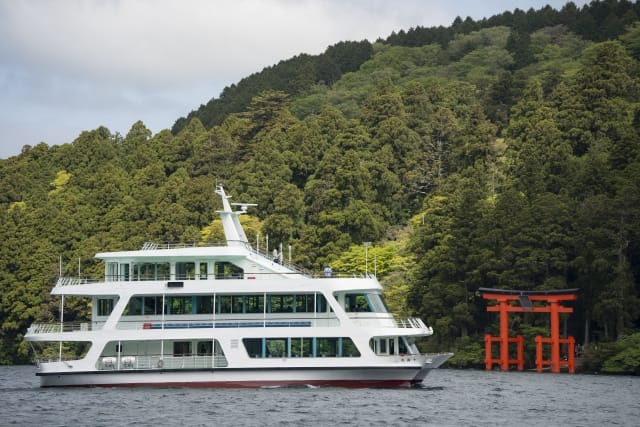
When I guide foreign friends, Hakone Shrine is a place I always stop by. This shrine, standing on the shore of Lake Ashi, is known as a power spot with over 1000 years of history. Particularly impressive is the "Peace Torii" standing in the lake. The red torii floating in the morning mist is an excellent photo spot where you can fully experience Japan's mystical atmosphere.
It's said to have benefits for good luck and matchmaking, and my friends are always delighted to experience traditional Japanese worship methods.
The scenery in each season is also spectacular, showing different faces throughout the year with cherry blossoms in spring, fresh greenery in summer, autumn colors in fall, and snowy landscapes in winter. My recommendation is to view the torii from a cruise ship on Lake Ashi. The view of the shrine looking up from the lake is as beautiful as a picture postcard.
Lake Ashi
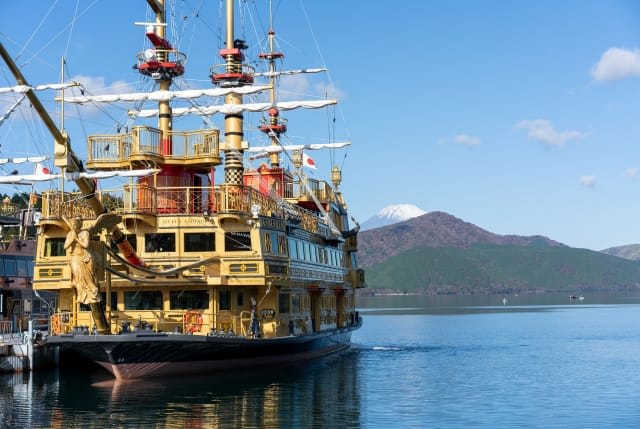
When you descend by ropeway from Owakudani to Togendai Station, you arrive at Lake Ashi. The sightseeing boat experience on this lake is a memorable activity that I've enjoyed many times over the 10 years. The sightseeing boats modeled after pirate ships offer a panoramic view of Mount Fuji and the lake, captivating many tourists.
There are quaint cafes and restaurants scattered along the lakeshore where you can spend a relaxing time. My recommendation is to take a break at a lakeside cafe at dusk. The lake surface illuminated by the setting sun and the silhouette of Mount Fuji are exceptionally beautiful.
Also, there are well-maintained hiking courses and parks along the lakeshore where you can enjoy a stroll while immersing yourself in nature. Especially around Hakone-en and Hakonemachi Port, there are plenty of photo spots where you can take great pictures for social media.
Hakone Open-Air Museum
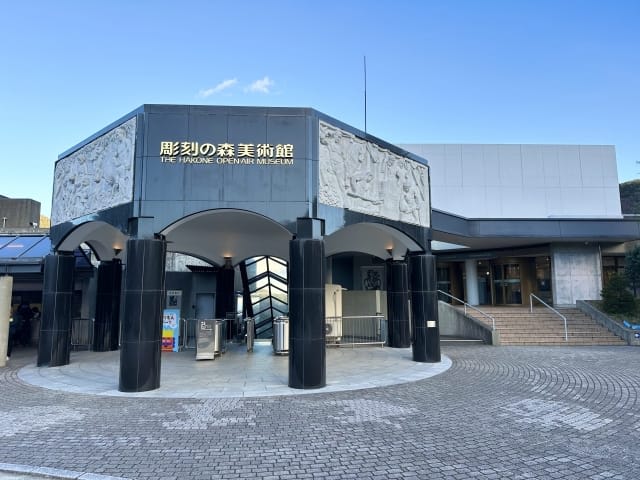
The Hakone Open-Air Museum, Japan's first open-air museum, is one of the spots that was most well-received when I guided my foreign artist friends. On the vast grounds, works by world-famous artists like Picasso and Henry Moore are scattered, creating a special space where you can enjoy art in nature.
Particularly impressive is the star-shaped maze. I've challenged it many times, but the mysterious spatial experience is fresh every time I visit. Also, there are many interactive works that children can freely touch and play with, making it very popular with family tourists.
When you're tired, I recommend taking a break at the hot spring foot bath. The moment of soaking your feet in warm water after viewing art works is exceptional. The harmony of nature and art changing with the four seasons is also a highlight, allowing you to enjoy different expressions depending on the season you visit, such as cherry blossoms in spring, fresh greenery in summer, autumn colors in fall, and snowy landscapes in winter.
Website: https://www.hakone-oam.or.jp/en/
Hot Springs in the Gora Area
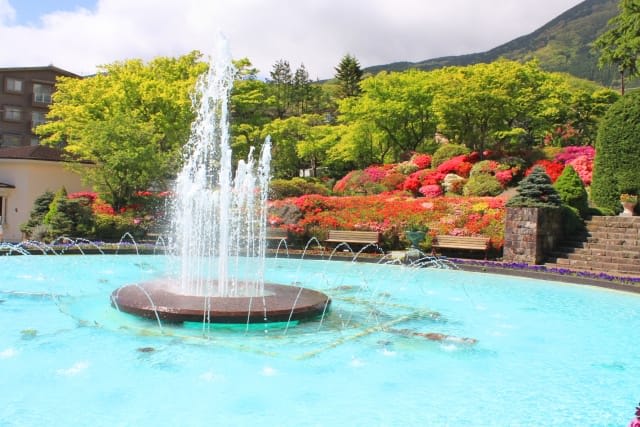
The Gora area, close to Owakudani, is one of Hakone's representative hot spring areas. It's also the hot spring area I've used most frequently during my 10 years of visiting Hakone. The hot springs, boasting abundant hot water, have well-developed day-trip facilities, making it possible to casually drop in for a bath during sightseeing.
What's particularly noteworthy is the spectacular view of the Hakone mountain range from the open-air baths. My favorite is bathing at dusk, and soaking in the hot spring while watching the mountains dyed by the setting sun is an unparalleled luxurious time. Also, there are plenty of accommodation facilities, from traditional inns with a calm atmosphere to modern hotels, allowing you to choose according to your preference.
Personally, I'd like you to stay overnight and enjoy the hot springs leisurely if possible.
Frequently Asked Questions about Owakudani
I've compiled the most common questions I've received from foreign tourists during my 10 years of visiting Hakone, along with their answers. I believe providing information based on actual experience will allow you to enjoy your sightseeing with more peace of mind.
Can Owakudani be visited year-round?
Basically, Owakudani can be visited throughout the year. I visit in all four seasons, and each season has its own unique charm. However, because of its high altitude, it can snow in winter. I've experienced snowy Owakudani several times, but on those occasions, I always make sure to prepare thoroughly for the cold.
Also, the ropeway may be suspended during bad weather. In my experience, the possibility of suspension is higher especially on windy or rainy days. I recommend checking the weather forecast in advance and confirming the operational status on the official website.
How much time should I allow for the visit?
Based on my experience, you need at least 2-3 hours to visit the Owakudani area. Including the Nature Research Path tour, tasting black eggs, and taking photos, I recommend 4-5 hours for a more fulfilling sightseeing experience.
For sightseeing in Hakone as a whole, a 1-night 2-day trip is ideal. When I guide foreign friends, I always recommend staying overnight. Staying at a hot spring inn is also a good opportunity to experience Japanese culture.
That being said, a day trip from Tokyo is certainly possible. If you depart early in the morning, you can efficiently visit the main spots. I sometimes visit on day trips too, and with careful planning, you can enjoy fulfilling sightseeing.
Is cold weather preparation necessary?
Cold weather preparation is essential. In my experience, Owakudani is about 5 degrees Celsius colder than Tokyo throughout the year. Especially due to its high altitude, it's cool in the mornings and evenings even in summer, and it gets really cold in winter.
When visiting in winter, a thick jacket is necessary. I always bring gloves and a scarf as well. Also, as mountain weather can change quickly, I strongly recommend bringing cold weather gear and rain gear to prepare for sudden temperature drops or rain.
Is it safe for children?
Regarding sightseeing with children, I have experience guiding many friends with families. Basically, you can enjoy sightseeing safely as there are well-maintained walkways. However, as it is an active volcanic area, there are some points to be careful about.
For small children, I recommend always holding hands with a guardian while walking. Especially near the fumarole area, the ground can be hot, and there are many no-entry area signs, so it's necessary not to take your eyes off your children.
As for strollers, I recommend bringing a baby carrier as there are places with steps and slopes. My friends with small children also used baby carriers.
You also need to be careful about volcanic gases. Especially for those with conditions like asthma, I recommend refraining from visiting. Always obey the no-entry areas.
Where can I eat?
There are plenty of facilities where you can enjoy meals within the Owakudani park area. I often use the cafeteria in the park, where you can enjoy a wide range of menus from the famous black eggs, of course, to local specialties like curry, curry udon, light meals, and fast food. No reservations are required, so you can casually drop by during your sightseeing.
Hakone Owakudani, which I've been visiting for 10 years, is a valuable spot where you can experience Japan's volcanic activity up close. From the powerful fumarole area, the famous black eggs, the scenic ropeway, to the surrounding tourist spots, it's full of attractions.
For first-time visitors, I recommend thoroughly checking basic information and preparing according to the weather and season. Also, using the Hakone Free Pass allows you to enjoy sightseeing efficiently.
I myself continue to be fascinated by the charm of Owakudani, which shows different faces each season and always offers new discoveries even after many visits. I hope you all create unforgettable memories in this mystical volcanic area!
